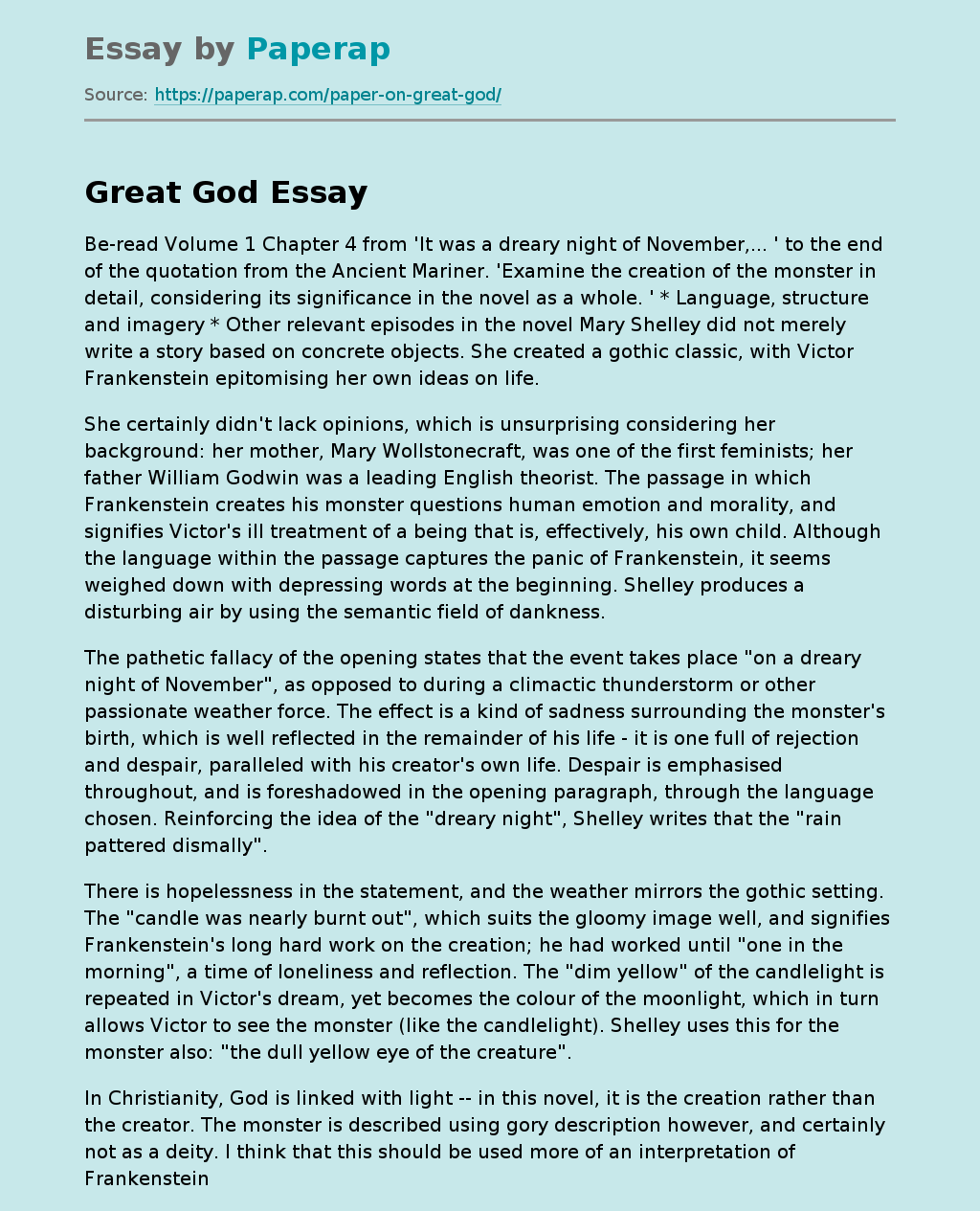Allegories in the Novel by Mary Shelley
Be-read Volume 1 Chapter 4 from ‘It was a dreary night of November,… ‘ to the end of the quotation from the Ancient Mariner. ‘Examine the creation of the monster in detail, considering its significance in the novel as a whole. ‘ Language, structure and imagery Other relevant episodes in the novel Mary Shelley did not merely write a story based on concrete objects. She created a gothic classic, with Victor Frankenstein epitomising her own ideas on life.
She certainly didn’t lack opinions, which is unsurprising considering her background: her mother, Mary Wollstonecraft, was one of the first feminists; her father William Godwin was a leading English theorist.
The passage in which Frankenstein creates his monster questions human emotion and morality, and signifies Victor’s ill treatment of a being that is, effectively, his own child. Although the language within the passage captures the panic of Frankenstein, it seems weighed down with depressing words at the beginning. Shelley produces a disturbing air by using the semantic field of dankness.
The pathetic fallacy of the opening states that the event takes place “on a dreary night of November”, as opposed to during a climactic thunderstorm or other passionate weather force. The effect is a kind of sadness surrounding the monster’s birth, which is well reflected in the remainder of his life – it is one full of rejection and despair, paralleled with his creator’s own life. Despair is emphasised throughout, and is foreshadowed in the opening paragraph, through the language chosen. Reinforcing the idea of the “dreary night”, Shelley writes that the “rain pattered dismally”.
There is hopelessness in the statement, and the weather mirrors the gothic setting. The “candle was nearly burnt out”, which suits the gloomy image well, and signifies Frankenstein’s long hard work on the creation; he had worked until “one in the morning”, a time of loneliness and reflection. The “dim yellow” of the candlelight is repeated in Victor’s dream, yet becomes the colour of the moonlight, which in turn allows Victor to see the monster (like the candlelight). Shelley uses this for the monster also: “the dull yellow eye of the creature”.
In Christianity, God is linked with light — in this novel, it is the creation rather than the creator. The monster is described using gory description however, and certainly not as a deity. I think that this should be used more of an interpretation of Frankenstein though, as it is his narration of events, and a particularly biased view. It is likely that Victor is getting the reader to sympathise with himself through his narrative technique of addressing them, or rather Walton, directly: “How can I describe my emotions…?
” As the monster’s eyes open to the world, Frankenstein’s eyes open to harsh reality, and the readers’ eyes should open to Frankenstein’s prejudice and refusal of accepting his own ‘son’. This addresses Shelley’s idea that knowledge is dangerous, contrasting to the generally believed, “knowledge is power”. Frankenstein has previously informed Walton that the man “who believes his native town to be the world” is “much happier”; this shows his deep regret of his earlier thirst for knowledge. He acts neither as a father nor as a creator ought, and indeed insults his own creator with blasphemy (“Great God!”).
Allegories in the Novel by Mary Shelley. (2017, Nov 05). Retrieved from https://paperap.com/paper-on-great-god/

